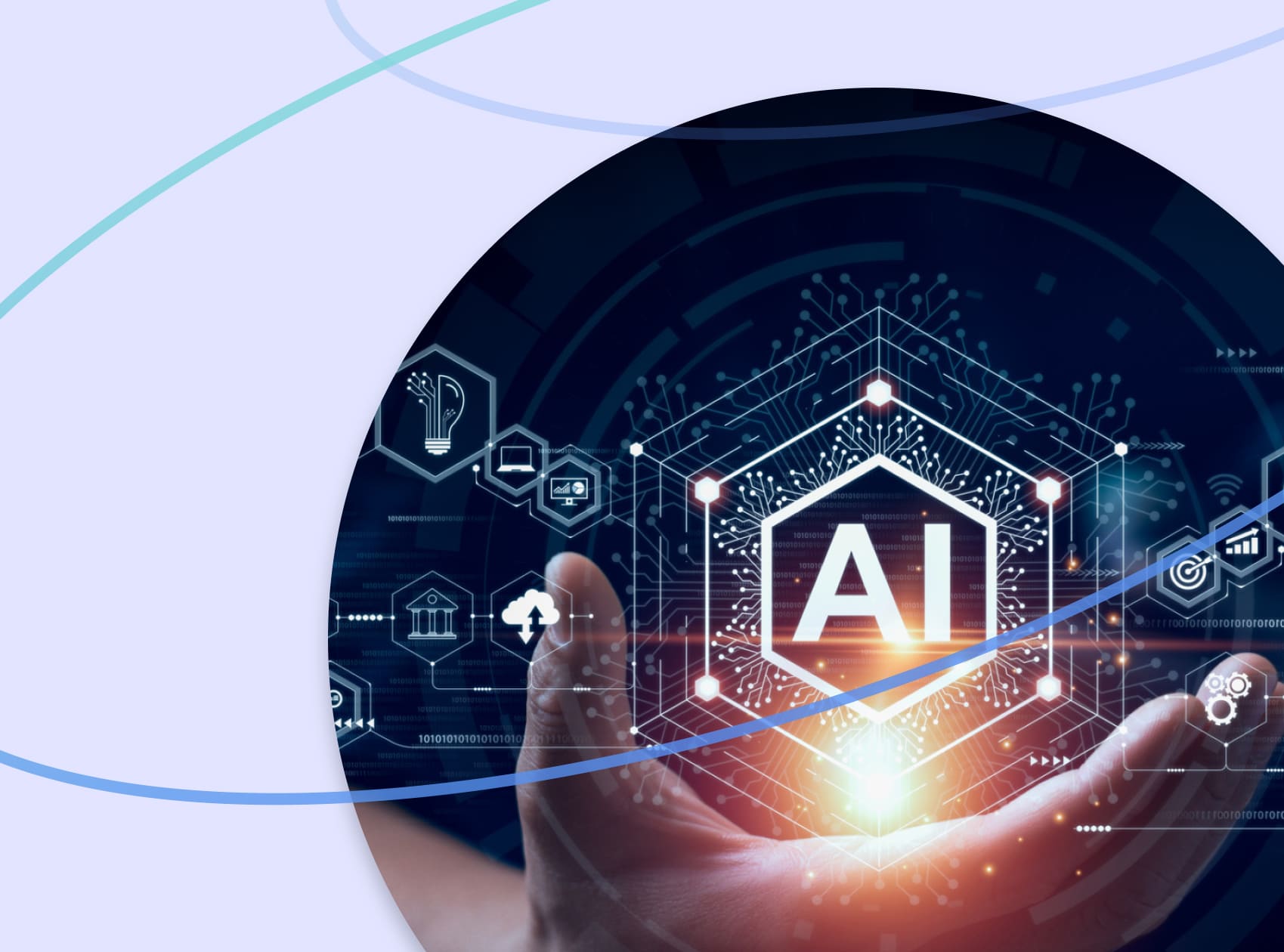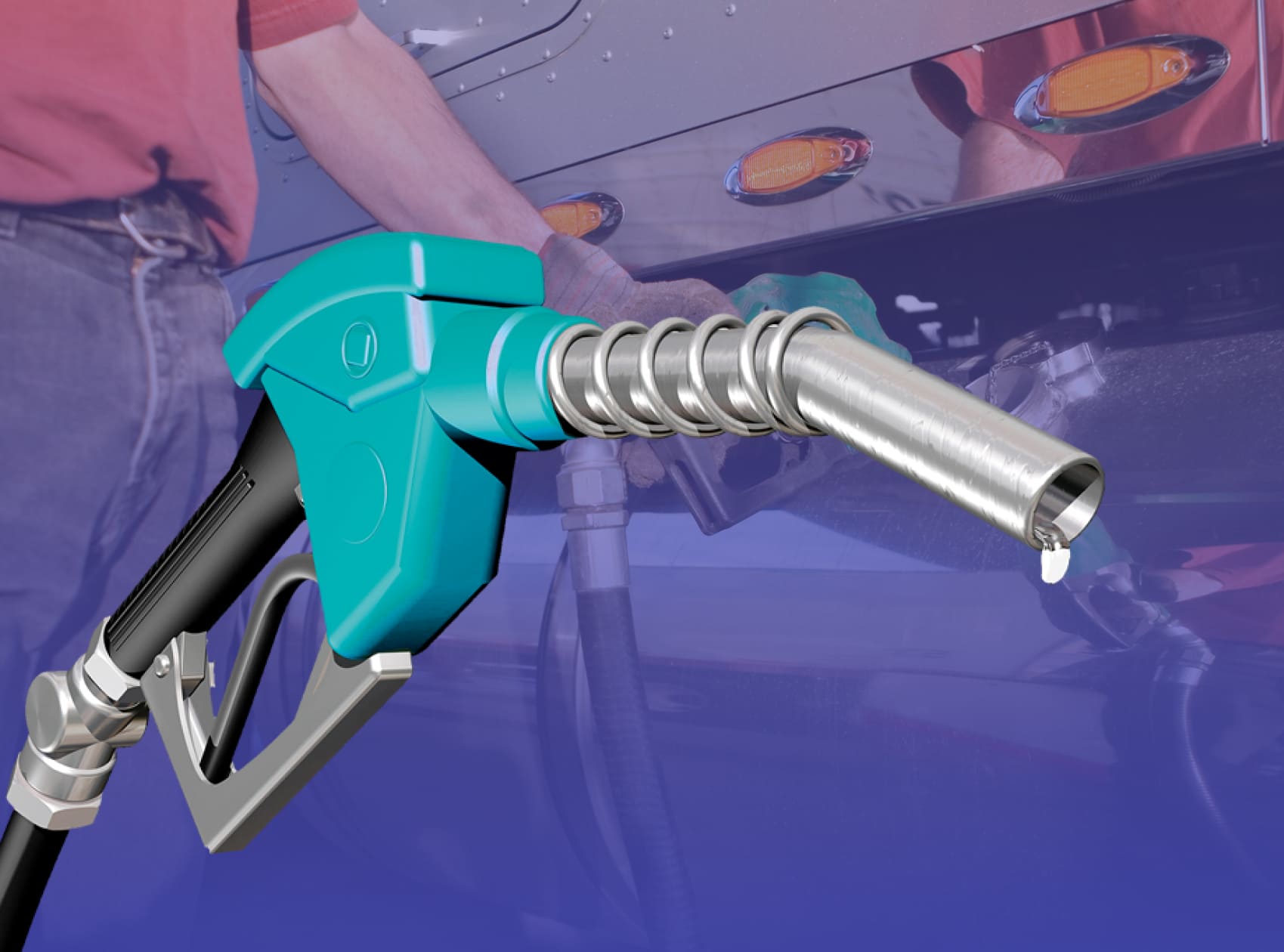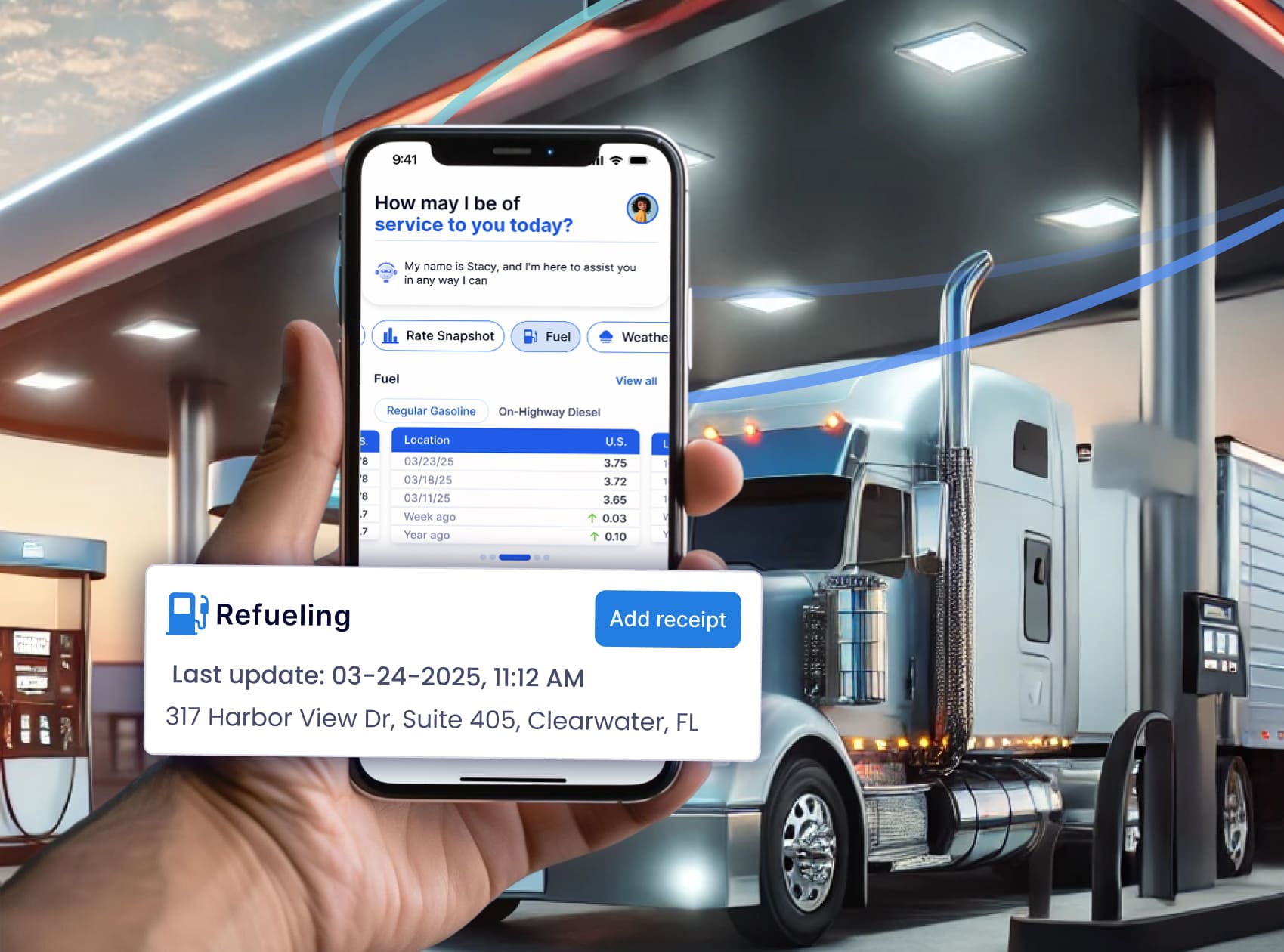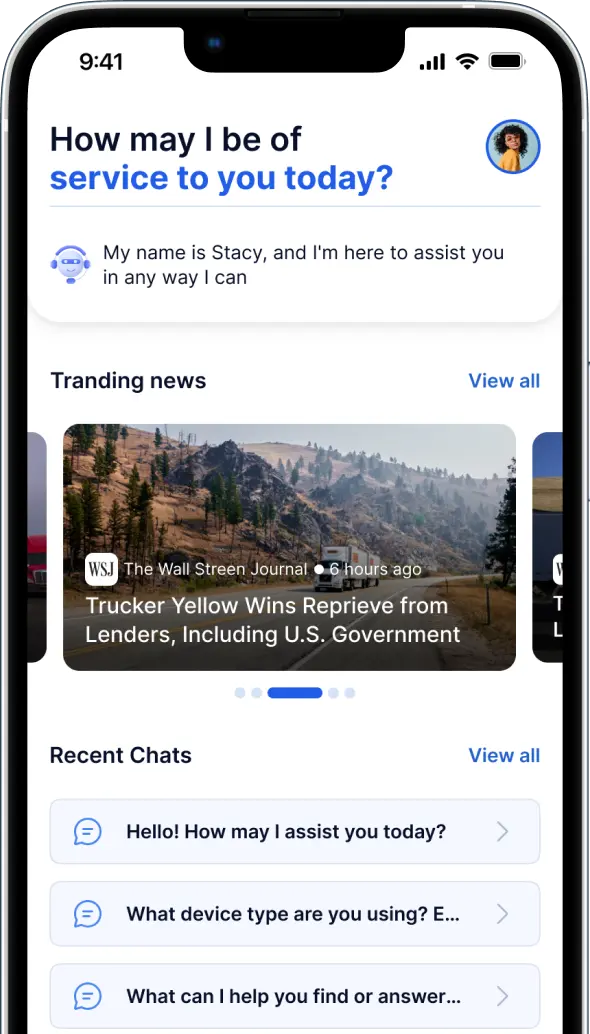AI in Trucking: Revolutionizing Logistics, Safety & Efficiency Trends

The trucking industry, one of the most vital components of global trade, has undergone significant transformations in recent years. From innovations in engine technology to advancements in telematics and driver assistance systems, the industry is evolving at a rapid pace. One of the most significant changes driving this evolution is the integration of Artificial Intelligence (AI) into various aspects of trucking and logistics.
In this article, we will explore how AI in trucking is revolutionizing logistics, improving safety, and driving efficiency trends. By the end of this article, you’ll gain a deeper understanding of how AI is shaping the future of trucking and how companies can leverage AI to stay competitive.
What is AI in Trucking?
Artificial Intelligence refers to the simulation of human intelligence in machines programmed to think, learn, and adapt to new data. In the trucking industry, AI is being used to automate processes, analyze vast amounts of data, and optimize various aspects of trucking operations, from route planning to driver assistance and vehicle maintenance.
AI in trucking can be broken down into three key areas:
- Autonomous Vehicles: Self-driving trucks are a game-changer in the trucking industry, allowing freight to be moved without human intervention. These trucks use AI to navigate, make decisions, and adapt to road conditions. Autonomous vehicles are expected to reduce human error, increase safety, and create new business models in the logistics industry.
- Telematics and Data Analytics: AI-powered telematics systems collect and analyze data from trucks, including engine performance, fuel usage, and driver behavior. This data is used to optimize routes, predict maintenance needs, and improve fuel efficiency. By analyzing historical data, AI can help companies identify inefficiencies and reduce operational costs.
- Driver Assistance Systems: AI is also playing a critical role in enhancing driver safety through advanced assistance systems. These include automatic emergency braking, lane-keeping assistance, adaptive cruise control, and collision avoidance systems. These technologies work together to reduce accidents and improve driver comfort.
AI also plays a crucial role in predictive maintenance, helping companies identify potential issues with vehicles before they cause breakdowns. By utilizing sensors and machine learning algorithms, AI can predict when a truck needs maintenance, ensuring that vehicles stay on the road longer and minimizing downtime.
AI’s Impact on Logistics
1. Optimizing Route Planning
One of the most significant ways AI is transforming logistics is through route optimization. Traditional route planning often relied on static maps and human judgment, but AI-powered systems use real-time data, weather reports, traffic conditions, and historical trends to generate the most efficient routes.
AI considers multiple factors such as:
- Traffic congestion
- Weather conditions
- Delivery windows
- Road closures or accidents
- Fuel consumption
By integrating this information, AI can adjust routes dynamically, helping companies save time and fuel, while improving the overall efficiency of deliveries. This not only cuts costs but also ensures that deliveries are made on time, enhancing customer satisfaction.
2. Inventory Management and Demand Forecasting
AI is also being used to enhance inventory management and demand forecasting. Machine learning algorithms can analyze patterns in consumer behavior, historical sales data, and seasonal trends to predict demand.
This helps logistics companies and trucking businesses optimize their inventory levels, ensuring that warehouses are stocked appropriately without overstocking or understocking. By aligning supply with demand, AI can reduce inventory costs, improve delivery times, and minimize the risk of stockouts.
3. Warehouse Automation
AI is also driving automation in warehouses. Robots, guided by AI algorithms, can move goods, sort packages, and load trucks more efficiently than human workers. This reduces the time spent on manual labor, speeds up the order fulfillment process, and improves accuracy. AI-powered warehouse management systems also enable better tracking of inventory, reducing errors and improving stock control.
4. Supply Chain Visibility
AI is providing greater transparency and visibility throughout the supply chain. With AI-powered platforms, companies can track shipments in real-time, monitor cargo conditions, and predict potential disruptions. This visibility allows businesses to respond proactively to issues such as delays, traffic disruptions, or unexpected demand changes, ensuring smoother operations and better customer service.
Enhancing Safety with AI
Safety is one of the top priorities in the trucking industry, and AI is playing a pivotal role in reducing accidents and improving overall safety standards.
1. Autonomous Trucking for Safety
Self-driving trucks, powered by AI, have the potential to drastically reduce accidents caused by human error. AI systems are capable of reacting faster to dangerous situations, making split-second decisions that human drivers might miss. These vehicles are equipped with sensors, cameras, and radar that provide a 360-degree view of the road, allowing the truck to detect obstacles, other vehicles, and potential hazards with incredible accuracy.
Autonomous trucks are designed to operate safely even in challenging weather conditions or at night when visibility is poor. By removing human error from the equation, autonomous trucks can significantly reduce the number of accidents on the road, making trucking safer for both drivers and other road users.
2. Advanced Driver Assistance Systems (ADAS)
While fully autonomous trucks are still in development, many modern trucks are already equipped with advanced driver assistance systems (ADAS). These systems, powered by AI, are designed to support drivers by providing real-time feedback and intervention in critical situations.
Key AI-driven ADAS features include:
- Lane-keeping assist: Helps drivers stay within their lane, preventing drifting and reducing the risk of side collisions.
- Automatic emergency braking (AEB): AI sensors can detect imminent collisions and automatically apply the brakes to prevent or mitigate an accident.
- Adaptive cruise control: AI adjusts the truck’s speed to maintain a safe distance from the vehicle ahead, preventing rear-end collisions.
- Collision avoidance: AI systems can identify and respond to potential collisions with other vehicles, pedestrians, or objects.
These systems help reduce the likelihood of accidents caused by driver fatigue, distractions, or poor decision-making. As AI continues to evolve, we can expect these safety features to become even more advanced, creating a safer environment for truck drivers and other road users.
3. Driver Fatigue Monitoring
Driver fatigue is a significant cause of accidents in the trucking industry. AI systems can monitor drivers’ behavior to detect signs of fatigue or distraction. By analyzing factors such as eye movement, facial expressions, and steering patterns, AI can identify when a driver is becoming drowsy or inattentive.
Once fatigue is detected, the AI system can alert the driver and recommend taking a break, reducing the risk of accidents caused by tiredness. Some systems may even take more proactive measures, such as pulling over or activating safety features to prevent accidents.
Improving Efficiency with AI
1. Fuel Efficiency Optimization
Fuel costs account for a significant portion of a trucking company’s expenses. AI is helping to reduce fuel consumption by analyzing driving habits and vehicle performance. By using real-time data from telematics systems, AI can identify inefficiencies in driving, such as rapid acceleration, harsh braking, or excessive idling.
AI-driven systems can provide feedback to drivers, helping them adopt more fuel-efficient driving habits. Additionally, AI can optimize routes to reduce fuel consumption by avoiding congested areas, minimizing idle time, and ensuring the shortest, most efficient routes.
2. Predictive Maintenance
AI-powered predictive maintenance is another key area where AI is driving efficiency. By analyzing data from sensors installed on trucks, AI can detect early warning signs of mechanical issues before they cause breakdowns. This helps trucking companies schedule maintenance before problems escalate, reducing downtime and repair costs.
Predictive maintenance also improves the lifespan of vehicles, ensuring that trucks stay on the road longer and require fewer emergency repairs. By preventing unexpected breakdowns, companies can keep their fleets running at optimal capacity and minimize disruptions to their operations.
3. Driver Performance Monitoring
AI-driven telematics systems can also monitor driver performance, helping to improve efficiency on the road. By analyzing data such as speed, braking patterns, and fuel usage, AI can provide insights into each driver’s performance and highlight areas for improvement.
This data can be used to provide personalized feedback to drivers, helping them improve their driving habits and become more efficient behind the wheel. By encouraging fuel-efficient driving and reducing unsafe behaviors, AI can help companies lower costs and improve overall fleet performance.
The Future of AI in Trucking
1. Fully Autonomous Fleets
While fully autonomous trucks are still in the development phase, we can expect them to become a more common sight on the roads in the future. Autonomous trucks will eliminate human drivers from the equation, reducing labor costs and the risk of human error. These trucks will be able to communicate with each other and with surrounding infrastructure, creating a more synchronized and efficient transportation network.
2. AI-Driven Smart Cities
AI will also play a key role in the development of smart cities, which will have a significant impact on trucking. These cities will be equipped with advanced sensors and communication systems that allow vehicles to communicate with traffic signals, roadways, and other vehicles. This will create a more efficient and safe transportation system, optimizing traffic flow and reducing congestion.
3. AI-Powered Customer Service
AI is also revolutionizing customer service in the trucking industry. With AI-powered chatbots and virtual assistants, companies can provide customers with real-time updates on their shipments, answer inquiries, and handle booking processes more efficiently. AI-driven customer service systems can provide 24/7 support, improving overall customer satisfaction.
How Ezchatai Helps Revolutionize the Trucking Industry
As the trucking industry embraces the benefits of AI, having the right tools to streamline operations, improve safety, and optimize efficiency becomes critical. Ezchatai, a powerful AI-driven platform, is at the forefront of this technological shift. Designed to assist trucking companies and fleet managers, Ezchatai offers a suite of intelligent solutions that can help businesses stay competitive in an evolving industry.
1. AI-Powered Fleet Management
One of the most challenging aspects of running a trucking business is managing a fleet of vehicles. Ezchatai simplifies fleet management by providing AI-driven insights and predictive analytics. By integrating with your fleet’s telematics and data systems, Ezchatai offers real-time monitoring and performance tracking of each vehicle.
2. Predictive Maintenance for Reduced Downtime
Downtime due to unexpected truck breakdowns can be costly, both in terms of lost revenue and customer satisfaction. Ezchatai helps prevent costly breakdowns by using predictive maintenance capabilities powered by AI. By analyzing data from sensors and telematics, Ezchatai can predict when a vehicle is likely to experience mechanical issues.
3. Route Optimization for Efficiency
Ezchatai leverages AI algorithms to help trucking companies optimize their routes based on real-time data. Through its sophisticated routing engine, the platform evaluates various factors such as traffic conditions, weather, and road closures to recommend the most efficient paths for each journey.
4. Driver Assistance & Safety Features
Ezchatai is equipped with a range of advanced driver assistance systems (ADAS), designed to improve driver safety and performance. The platform integrates AI technologies to offer features that monitor driver behavior, detect fatigue, and assist with real-time decision-making to prevent accidents.
5. Real-Time Reporting & Analytics
Ezchatai’s dashboard provides real-time insights into fleet performance, offering detailed reports on driver behavior, vehicle conditions, and operational efficiency.
6. Customer Service Automation
Ezchatai also improves customer service by integrating AI-driven chatbots and customer service tools. The platform allows businesses to interact with customers in real time, providing automated updates on shipment status, delivery schedules, and tracking information.
By integrating Ezchatai into your fleet management operations, you can leverage the power of AI to streamline your logistics, enhance safety, and maximize efficiency. Whether you’re a small trucking company or a large fleet operator, Ezchatai offers the solutions you need to succeed in an increasingly competitive and fast-paced industry.
Thank you for your comment
It will be published after moderation

 Blog
Blog









Comments (0)